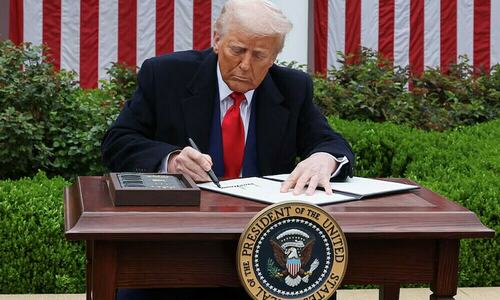Global Markets React to US Tariffs
Global markets experienced turbulence on Friday following President Trump’s imposition of tariffs targeting a vast number of US trading partners. These nations now face a crucial seven-day period before the increased duties take effect.
President Trump revealed late Thursday that numerous economies, including the European Union, will be subject to new tariffs ranging from 10 to 41 percent.
The White House has clarified that these measures will be implemented on August 7, instead of the initially scheduled date. This provides governments with a chance to negotiate bilateral agreements with Washington, potentially securing more beneficial terms.
Canada, a major trade ally of the US, has been impacted with levies of 35 percent, a rise from 25 percent, which took effect Friday. However, numerous existing exemptions will remain.
The tariffs highlight Trump’s focus on utilizing economic strength to benefit US exporters and promote domestic manufacturing by restricting foreign imports.
This forceful strategy has sparked concerns about possible inflationary pressures and broader economic consequences within the world’s leading economy.
Stock markets across Hong Kong, London, and New York experienced declines as they processed the market disruption.
Trump’s actions coincide with ongoing discussions about the optimal strategies for managing the US economy. The Federal Reserve recently opted to maintain current interest rates, despite significant political pressure from the White House to implement reductions.
New data released Friday indicated that US job growth in July fell short of anticipated levels, with the unemployment rate rising from 4.1 percent to 4.2 percent.
On Wall Street, the S&P 500 saw a decrease of 1.7 percent, while the Nasdaq declined by 2.3 percent.
Trump has escalated duties on approximately 70 economies, increasing them from the initial 10 percent implemented in April when he introduced “reciprocal” tariffs in response to what he deemed unfair trade practices.
The revised, higher rates outlined in an executive order will vary based on the specific trading partner. Any goods rerouted through other countries to avoid US duties will be subject to an additional 40 percent tariff, according to the order.
These tariffs also carry political undertones, with Trump using them to pressure Brazil regarding the trial of former president Jair Bolsonaro, who is considered his far-right ally.
He also cautioned Canada about potential trade repercussions following Prime Minister Mark Carney’s announcement of plans to acknowledge a Palestinian state at the UN General Assembly in September.
Trump’s order cited Canada’s alleged failure to “cooperate in curbing the ongoing flood of fentanyl and other illicit drugs,” even though Canada is not a primary source of such narcotics.
In contrast, Mexico was granted additional time by Trump, with a 90-day delay on a threatened tariff increase from 25 percent to 30 percent.
However, numerous Canadian and Mexican goods entering the United States under an existing North American trade agreement will continue to be exempt.
Carney stated that his government was “disappointed” by the latest tariff increase but noted that, given the exclusions, the average US tariff on Canadian goods remains among the lowest compared to other US trading partners.
With uncertainty surrounding the effectiveness of existing bilateral trade agreements—including those with the European Union and Japan—the ultimate success of Trump’s broader strategy is still undetermined.
Wendy Cutler, senior vice president at the Asia Society Policy Institute, remarked, “The executive order and related agreements forged in recent months undoubtedly dismantle the trade framework that has governed international commerce since World War II.”
She further questioned, “Whether our partners can maintain it without the United States remains to be seen.”
Notably, China was excluded from the recent tariff actions as it is currently engaged in negotiations with the United States.
Washington and Beijing had previously imposed reciprocal tariffs reaching triple-digit levels, but both nations have consented to temporarily reduce these duties and are working to extend their truce.
Countries that managed to secure agreements with Washington to circumvent steeper tariffs included Vietnam, Japan, Indonesia, the Philippines, South Korea, and the European Union.
Among the other tariff adjustments in Trump’s latest directive, Switzerland now faces an elevated duty of 39 percent.



Comments (0)
No comments yet. Be the first to comment!
Leave a Comment